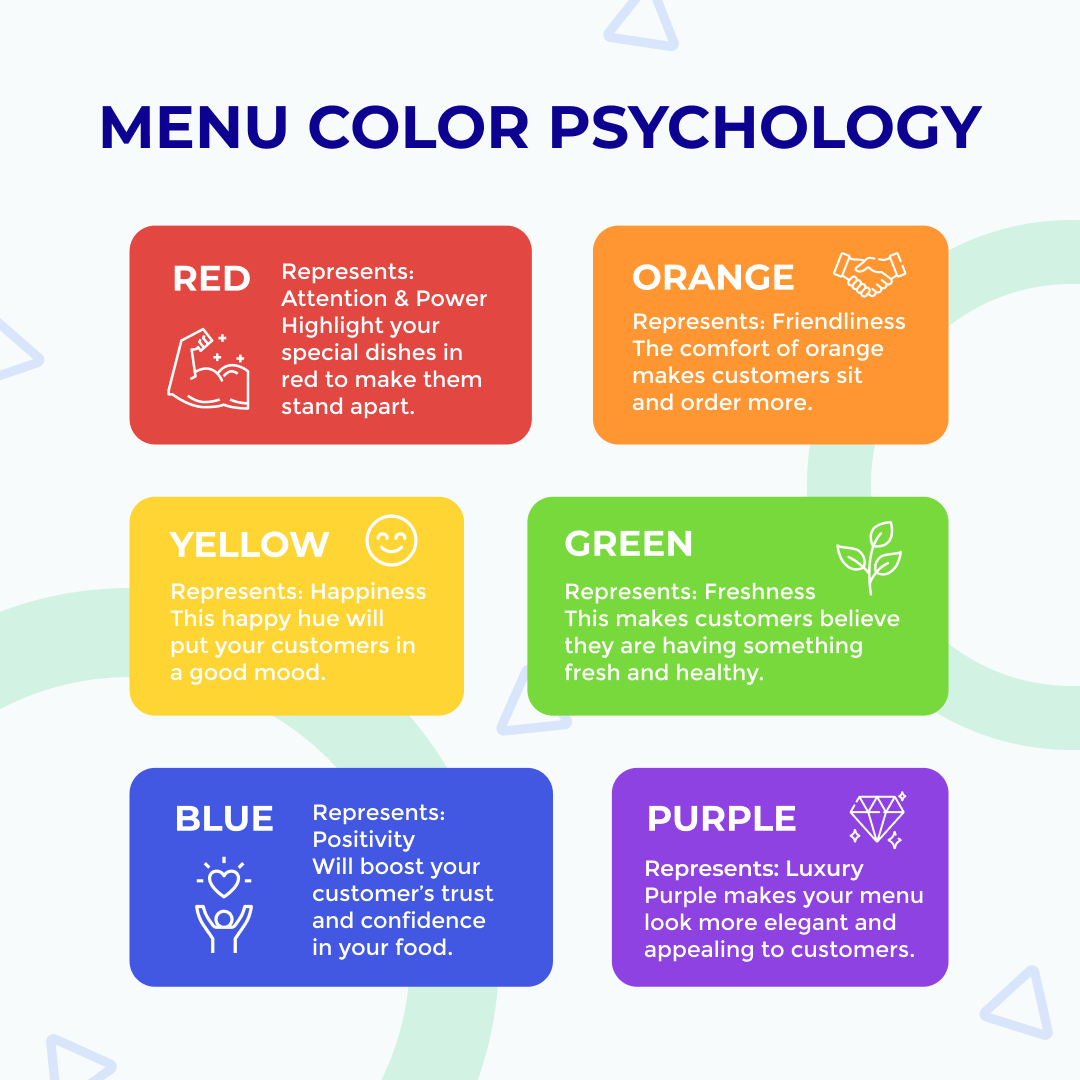Menu design is an often overlooked aspect of the dining experience, yet it plays a significant role in influencing our choices and overall satisfaction with a meal. Beyond simply listing dishes and prices, menus are carefully crafted to guide diners towards certain selections through the use of various visual elements. From typography and layout to imagery and colour schemes, every aspect of menu design is strategically chosen to appeal to our psychological preferences and influence our dining decisions.
Typography: The choice of font and typography on a menu can have a profound impact on how diners perceive the dishes. Fonts convey personality and style, and different styles evoke different emotions. For instance, elegant script fonts might suggest sophistication and luxury, while clean and modern sans-serif fonts convey simplicity and freshness. Additionally, using larger font sizes or bolding certain items draws attention and emphasises their importance, subtly nudging diners towards those choices.
Layout: The layout of a menu also plays a crucial role in guiding diners towards particular dishes. Studies have shown that people tend to focus on the top-right corner of a menu first, so restaurants often place their most profitable or popular items in this prime position. Additionally, grouping similar items together or using strategic spacing can help streamline decision-making and make it easier for diners to navigate the menu.
Imagery: The inclusion of images on a menu can greatly influence diners’ choices, as visual representations of dishes can stimulate appetite and cravings. High-quality photographs of mouthwatering dishes can entice diners to order certain items, especially if they are presented in a visually appealing way. However, it’s essential to use images sparingly and strategically, as too many pictures can overwhelm the reader and detract from the overall aesthetic of the menu.
Colour Scheme: Colours have a powerful impact on our emotions and perceptions, and menu designers leverage this knowledge to influence diners’ choices. Warm colours like reds and oranges are often associated with energy and excitement, making them ideal for highlighting specials or signature dishes. In contrast, cool colours like blues and greens evoke a sense of calm and freshness, which may be used for highlighting healthier options or seafood dishes. Additionally, contrasting colours can help certain items stand out and grab attention, making them more likely to be chosen.
Psychological Triggers: Beyond the visual elements, menu design also incorporates various psychological triggers to influence diners’ choices. For example, using descriptive language to describe dishes can make them seem more enticing and appetising. Words like “succulent,” “juicy,” or “mouthwatering” evoke sensory experiences and can make dishes more appealing. Additionally, pricing strategies such as omitting currency symbols or using round numbers can make prices seem more reasonable and encourage spending.
Conclusion: In conclusion, menu design is a powerful tool that restaurateurs use to influence diners’ choices and enhance their overall dining experience. By carefully considering typography, layout, imagery, colour scheme, and psychological triggers, menus can effectively guide diners towards certain selections while also reflecting the personality and style of the restaurant. Understanding the psychology behind menu design allows restaurants to create menus that not only showcase their offerings but also maximise profitability and customer satisfaction.
digital and social media marketing. We have specialists for each marketing service who will advise and professionally manage the service(s) you choose
At Presence,we are experts in marketing, and we do marketing with excellence.

